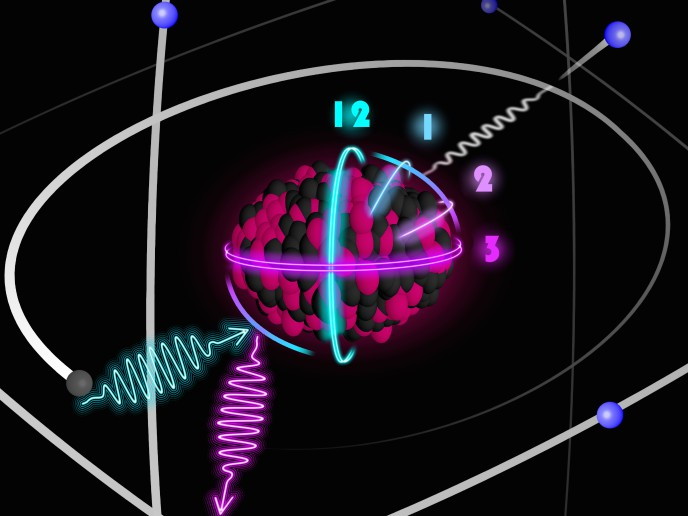The time has come for the best clock in the world
Today’s best atomic clocks lose only 1 second in 30 billion years, making them the most precise measurement devices ever built. Atomic clocks on navigation satellites provide the global positioning system signals we use daily. However, extremely precise atomic clocks are very delicate and can only be operated in specialised laboratories.
Measuring time as accurately as possible
“To further increase the positioning accuracy down to the centimetre level, we need clocks that are even more precise, but at the same time sufficiently compact and robust to be useful in field applications,” says Prof. Thorsten Schumm, coordinator of the EU-funded nuClock(opens in new window) project. The scientists have proposed a conceptually new approach, replacing the commonly used electronic transitions employed in atomic clocks with a very special nuclear transition in an atom called Thorium-229. Instead of using the electrons of an atom, they used Thorium-229’s nucleus for greater precision. “This nuclear clock has the potential to outperform existing atomic clocks in terms of precision, but it’s also intrinsically more robust against perturbations.” One of the main motivations behind the nuclear clock concept was that it could ultimately be realised in a solid-state version. This presents tremendous advantages such as robustness, environmental footprint and mass production. The nuClock team showed that the nuclear clock transition energy is indeed compatible with such an approach. Project partners demonstrated that the nuclear clock is possible and within reach. More specifically, they determined the energy of the Thorium-229 transition that will be used for the clock and a broad range of other formerly unknown nuclear parameters. They also developed the required laser system in the vacuum ultraviolet range. Thanks to nuClock, these are now commercially available.
It’s high time that nuclear clocks outperform existing atomic timekeepers
Until nuClock came along, “the nuclear clock field hadn’t seen a coordinated effort of this kind before, research teams were scattered and a real community didn’t exist,” explains Prof. Schumm. The project benefited from the partners’ techniques and infrastructure, including gaining access to large-scale research facilities, world-leading detectors that had never been used in such a context and industry-standard laser development. Thorium-229, the nuclear clock’s key material, is extremely scarce; there are just milligrams available on the entire Earth. Because of this, a strong collaboration was necessary to coordinate and pool the material’s acquisition and processing. Such efforts ultimately led to reduced costs. “The nuclear clock as a commercial product is still several years down the road, but when we talk about autonomous cars or freight trains, we’re talking object positioning on Earth on centimetre level or better,” he adds. “In general, a significantly improved positioning system will have many applications.” “nuClock has established Europe as the leading player in the nuclear clock domain,” concludes Prof. Schumm. “Now the task is to keep it that way and stay ahead of our competitors.”







